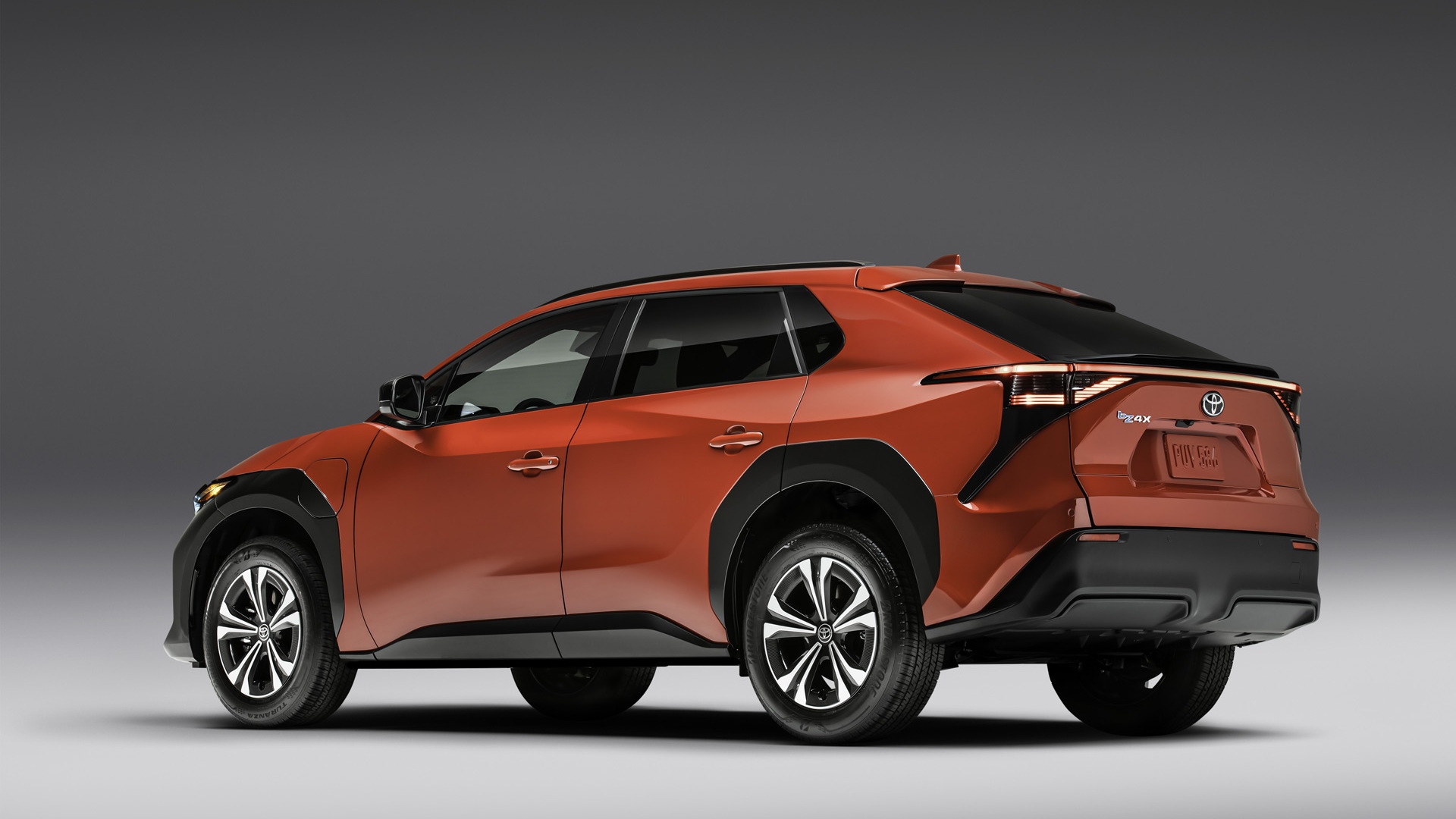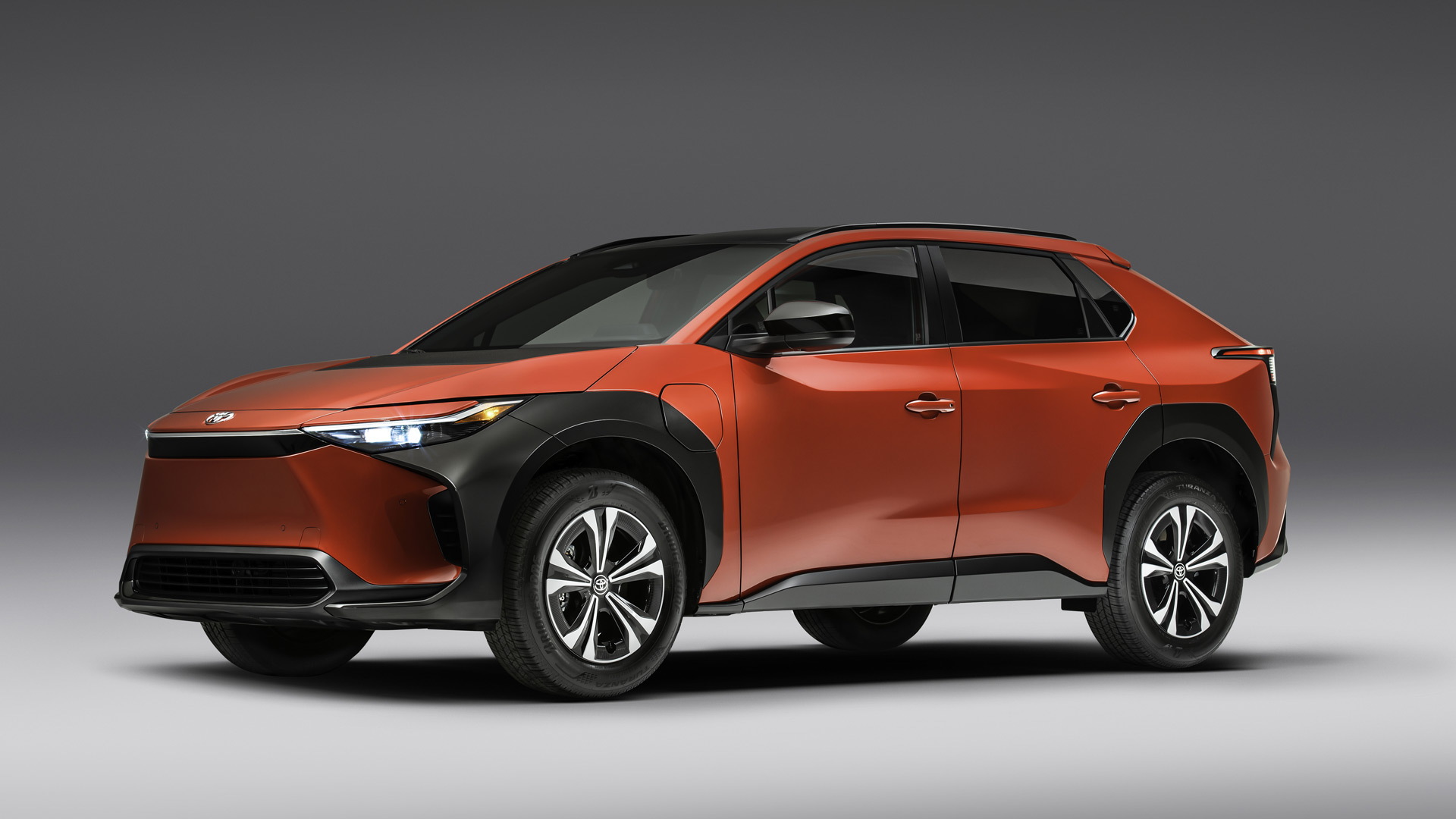Toyota’s onslaught of battery electric vehicles is likely to arrive later than those from other automakers. But when these models appear, don’t expect Tesla range numbers—or Tesla prices.
Toyota instead plans to go light with batteries on its EVs and compete with affordability, durability, and environmental responsibility, all many of the same qualities that have made its Prius a longtime success. The Lexus brand, on the other hand, could offer long-range EVs with 400 to 500 miles of range enabled by bigger packs.
Those pieces were among those provided in a top-level view from Cooper Ericksen, Toyota Motor North America VP for product planning and strategy, as he spoke with Green Car Reports about the company’s EV strategy. Although we couldn’t talk product details beyond the bZ4X electric crossover that had just been revealed, Ericksen had much to say about how EVs will fit in for Toyota as the decade progresses.
Going big on affordability
First off, Toyota sees affordability as one of the necessary pieces for environmental friendliness—and selling enough EVs at a level that makes a difference.
“‘Nothing happens until you sell a car’ is an expression we have internally,” he summed. “To have a positive impact on the environment, you must sell a high volume of cars...so it’s really important that the price point is such that we can make an actual business model out of it.”
To that point, Toyota expects that it will be selling millions of electric vehicles by the end of the decade. In September, the automaker announced plans to spend $13.5 billion on battery development through then, with aims of cutting the battery cost per vehicle by 50% versus the bZ4X.

2021 Toyota RAV4 Prime XSE
But Toyota has some different ideas about how EVs fit into the lineup next to its hybrids and Prime plug-in hybrids—as entries that might not so much be flagships for the lineup, but as modest, shorter-range models that hit those other Toyota hallmarks.
That means shaking off the range obsession
“The bottom line is, over time we view EV range similar to horsepower,” Ericksen said, comparing it to how almost any customer really wanted 400 horsepower but, at an affordability standpoint, might settle for 120 hp. “People who are affluent and can afford a really expensive vehicle can afford a lot of horsepower.”
“Batteries are expensive, and the bigger you make the battery, the more expensive it is,” Ericksen said. “So the trick, I think long-term is not all about range, range, range; the trick is matching the range and the price point to what the consumer can afford.”
“And as people become more accustomed to operating an EV I think the anxiety over range is going to dissipate,” he continued, saying that many EV shoppers are going to understand they don’t need 300 or 400 miles—and certainly not in a second or third car.
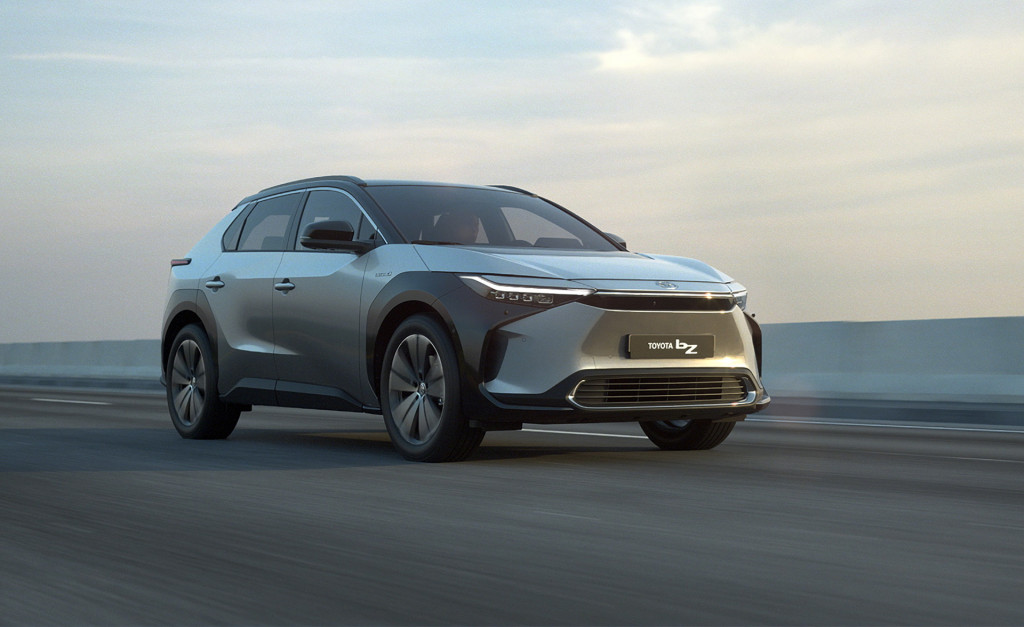
2023 Toyota BZ4X
Although we tend to agree that range is a red herring, especially for that second or third car, Toyota will face some headwinds if it dives into the “just enough” category. In a study released earlier this year, J.D. Power found that EVs with more than 200 miles of range had higher levels of satisfaction than those with less. And back in 2017, a comprehensive Autolist survey on minimum range found that only 14.6% of individuals saw 200 miles of range as enough, while the largest group, 38.9%, considered 300 miles of range to be enough. It emphasized, then, that a jump from 250 to 300 miles yielded an increase of 30% more people willing to buy an EV.
The bZ4X will arrive at “up to 250 miles,” according to Toyota.
The landscape and range expectations have changed dramatically since Toyota’s last fully electric effort for the U.S., the “Powered by Tesla” RAV4 EV and its 103-mile EPA range. For years a number of automakers made puzzling decisions that were based, in some cases, more on their own past efforts than on present expectations. Honda, for instance, decided that its Clarity Electric’s 89-mile range was adequate based on a survey of drivers of the 82-mile Fit EV in California.
“We're trying to right-size the battery to the customer use case, to get the right price point, right peace of mind,” Ericksen said. “And we think we're pretty much there with the bZ4X now. Will there be customers longer-term that demand higher ranges? Absolutely.”
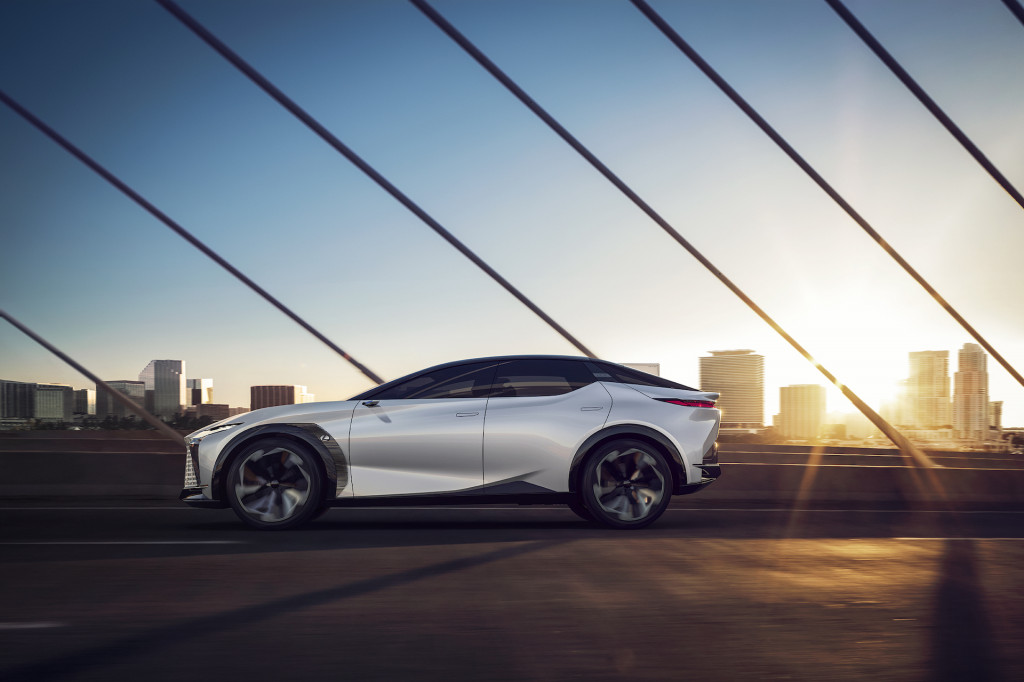
Lexus LF-Z Electrified concept
Ericksen sees 400 to 500 miles as a goal for luxury models. Lexus has one EV on the way later in 2022, heralded by the LF-Z Electrified concept and due to be called the RZ 450e in production. But longer ranges means bigger batteries using a lot more cells, with their heavy carbon footprint, per vehicle.
Wondering how low it can go on range—and price
“But the low end to me is the more curious number,” he said. “What's the lowest number that you can put out there that achieves the affordability and the use case for that customer?”
“I think we have some examples in the market over the past five years or so that we can learn from. It's something we're going to have to figure out because it has a huge impact on resources.”
And convincing EV shoppers they need to foot a higher sticker price for the larger battery with a seldomly used capacity isn’t that path.
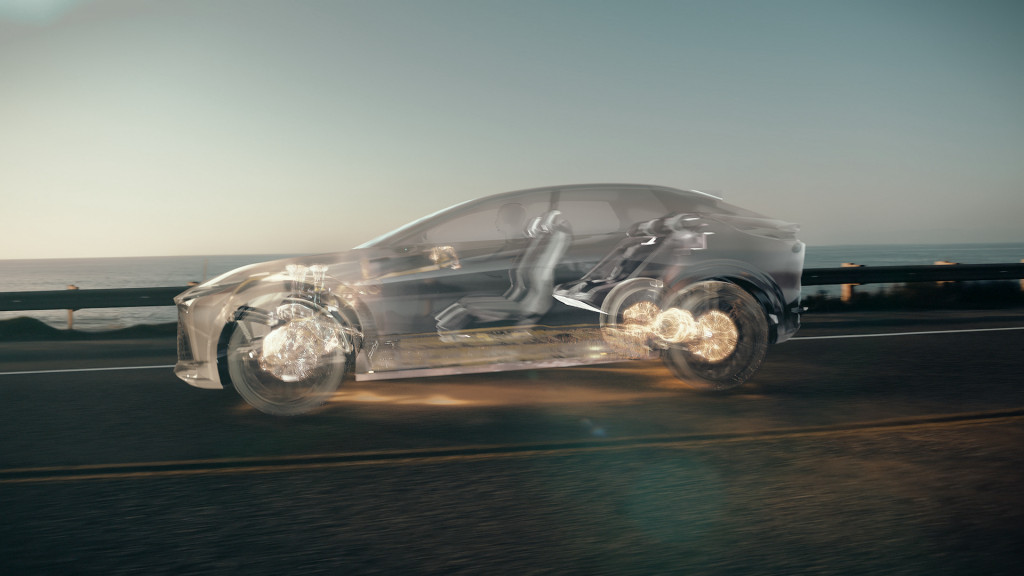
Lexus LF-Z Electrified concept
Pointing to the strain on resources and raw materials that batteries introduce, Ericksen said: “We have to be really careful, you know, if we build EVs with 200-kwh batteries, and you can build four EVs for that one...we have to think about that as a society and as an industry to figure out what's best for consumers in the environment.”
Yes, its hybrid battery experience does translate to BEVs
What from Toyota’s hybrid toolset can translate to battery electric models? Toyota says that it’s two things: battery durability and longevity, and on-the-ground support. Early on, one of the biggest reasons to reject hybrids was how often an owner would need to replace the hybrid battery, and at what cost. But Toyota tackled that more than a decade ago when it essentially matched the useful life of the battery to the typical life of the car—and beyond.
The company’s experience with degradation has led it to an assurance that the bZ4X’s pack will have 90% of its capacity after 10 years.
“If you haven’t addressed degradation, then it’s diminishing returns,” Ericksen said.

Toyota battery degradation claims for bZ4X - 2021
As solid-state cells enter the scene perhaps later this decade, Toyota brings experience working with different battery types and chemistries. Nickel metal hydride cells’ rate of charge and discharge, and their combination of long-term durability and cost-effectiveness—and cold-weather performance—have made them ideal for hybrids. That technology has been pushed to a new level in the latest Aqua—an iteration of the Prius C—offered in other markets, which is 20% more fuel-efficient than its predecessor, with a doubling of total output from a pack the same size.
Some Toyota hybrids use lithium-ion cells, but that’s mostly in cases where the company needs a certain performance and to control weight—especially in vehicles that were loaded with features.
On the point of on-the-ground support, Toyota dealership service departments don’t flinch when they see the orange high-voltage cables of an EV. They’ve been dealing with them as part of service visits for the Prius and other hybrids for more than 20 years.

Toyota BEV awareness survey
But Toyota’s own BEV Awareness Survey suggests that there’s much education to be done. Michael Tripp, Toyota North America VP for marketing and communications, said that in response to “Does a BEV have a gas engine?”, just 34% responded correctly with “no” in 2019. In a 2021 repeat of the survey, the percentage answering "no" remained at 34%.
EV efficiency is important for Toyota, maybe not so much for the buyer
There may be some advantage in simplifying EVs for the consumer—especially around charging. But adding efficiency to the conversation is the wrong direction, Ericksen claims.
"My focus is what range and price point, you know, does the consumer demand,” he said. “That efficiency plays huge...it's how you manage the electric drive motors and what style of drive motors and battery. I'm not sure how relevant that is to consumers...it's less about efficiency, and it's more about what am I going to pay for it and what's my range and my driving dynamics, you know, it's all those things.”
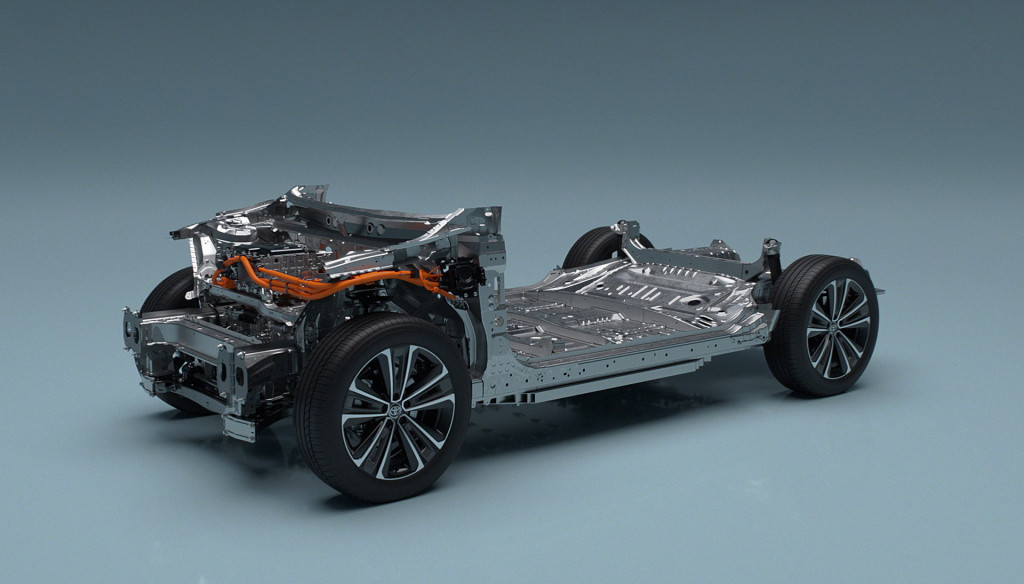
2023 Toyota BZ4X
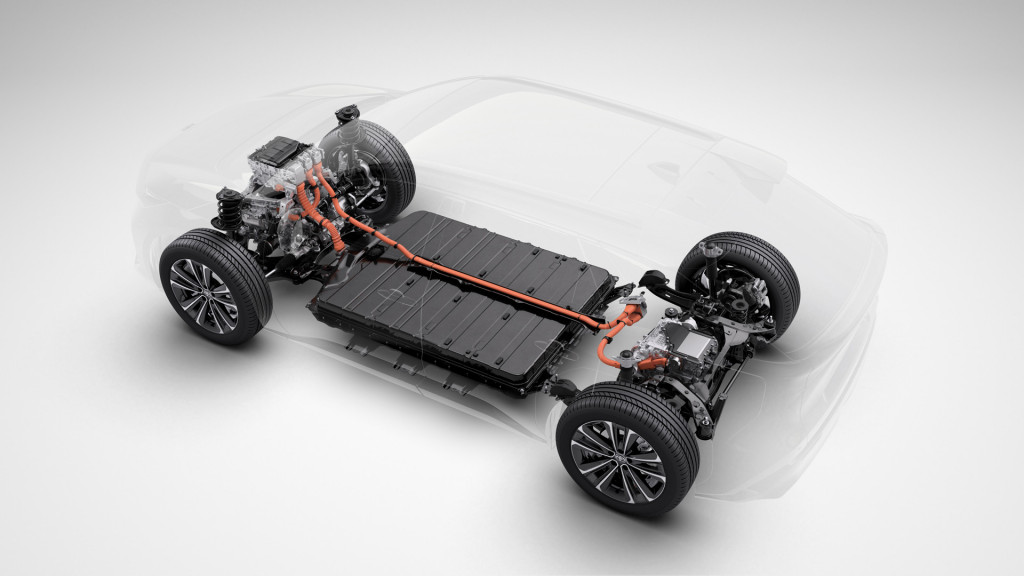
2023 Toyota BZ4X
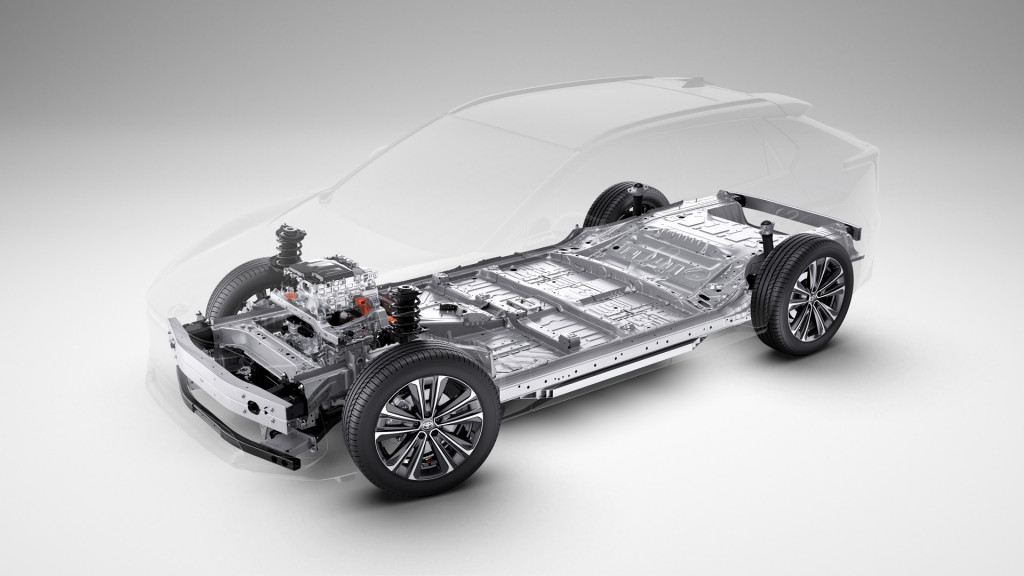
2023 Toyota BZ4X
But Toyota’s engineers are most definitely going to be working to optimize EV efficiency, he explained.
“The reality is, I think that needs to be a big part of every EV we develop,” Ericksen said. “Similar to, we launched with a gen-one hybrid system on Prius, then we built a gen two....you know, fundamentally it’s all about efficiency and price-point performance.”
Such a Prius-like tour de force for EV efficiency doesn’t exist on the Toyota roadmap, according to Ericksen—or at least not at the stage where it can be confirmed. You could argue that the Nissan Leaf has already explored that boundary, with mixed success. But can the master of making profitable hybrids transition to getting the business model right for EVs from a slow start? A late-mover advantage is an intriguing one.


